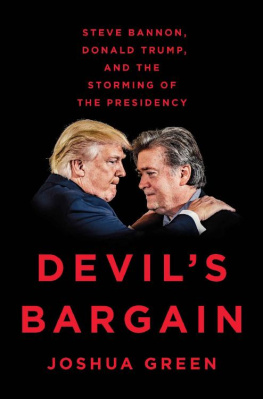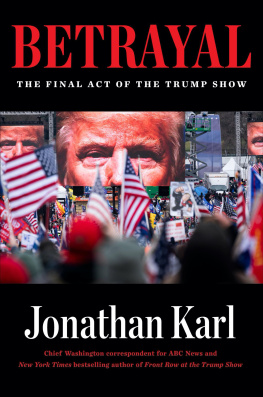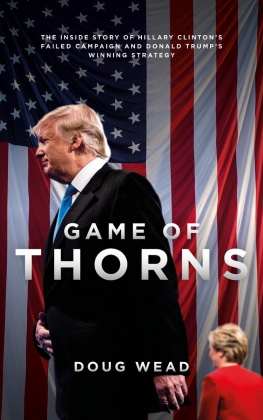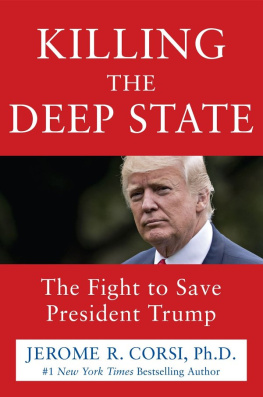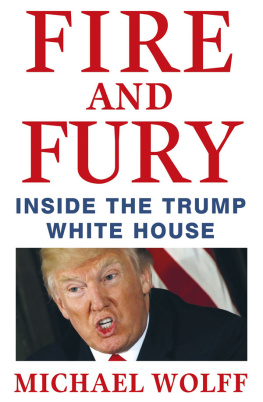Penguin supports copyright. Copyright fuels creativity, encourages diverse voices, promotes free speech, and creates a vibrant culture. Thank you for buying an authorized edition of this book and for complying with copyright laws by not reproducing, scanning, or distributing any part of it in any form without permission. You are supporting writers and allowing Penguin to continue to publish books for every reader.
PREFACE
I n the late spring of 2011, I got a phone call from a publicist inviting me to a screening of a documentary film about Sarah Palin. At the time, I was a political writer for The Atlantic, and Id just returned from a reporting trip to Alaska and published a long, somewhat contrarian article on Palins aborted governorship. that Palin had done more good than people realizedcleaning up a corrupt state GOP, raising oil taxes, fixing Alaskas budgetand that if she was going to run for president in 2012, which was a live possibility, then she should revert to her populist instincts. The filmmaker had read my article and loved it, the publicist told me.
A few days later, I showed up at a sound studio in Arlington, Virginia, and met the filmmaker. His name was Steve Bannon. His film, a soaring testimony to Palin oddly titled The Undefeated (she and John McCain lost the 2008 election), was forgettable. Bannon himself was unforgettable. Brimming with vigor in a military field jacket, he made an impassioned speech about the power of the Tea Party movement, still a gathering force, and Palins place in the vanguard of a new populist conservatism. He was clearly intelligent, had a manic charisma, and espoused a distinct and unusual politics. He also claimed to have been a Goldman Sachs investment banker and Hollywood producer, recently returned from running a video-game empire in Hong Kong.
I quickly sized him up as a colorful version of a recognizable Washington character type: the political grifter seeking to profit from the latest trend. No politician was hotter in 2011 than Palin. And Washington was rife with Tea Party con men. We agreed to stay in touch (grifters can be good sources). Later on, out of idle curiosity as much as anything else, I called Goldman Sachs to see if Bannon had really worked there. He had. A quick check revealed that he had also produced movies for Sean Penn and Anthony Hopkins. His story, in all its multifaceted oddness, checked out.
One of the joys of being a magazine feature writer is that you can collect interesting characters and find excuses to write about them later on. I decided right away that I would profile Bannon, but took years to get around to actually doing it. In the meantime, we hung out at political events or at the Capitol Hill headquarters of Breitbart News, which he took over in 2012. Through the years, I discovered seemingly endless new dimensions (and contradictions): his admiration for Rachel Maddow, whom he considered a master of fact-based partisan polemics; his controversial stint overseeing the Biosphere 2 Project in Arizona; his deep interest in Christian mysticism and esoteric Hinduism; and his particular fascination with an obscure, early-twentieth-century French intellectual, Ren Gunon, who became a Muslim and observed the Shariaa jarring contrast to the bombastic Islamophobia Bannon often espoused. What also became clear was his sincere belief that right-wing Tea Party populism was a global phenomenon: Palin soon faded, but Bannons conviction in his political ideas only grew stronger. And although I didnt know it at the time of the screening, he had recently met Donald Trump and begun informally advising him on this very subject.
In 2015, I finally found an angle for my profile. Bannon had spent two years masterminding an investigative book about Bill and Hillary Clinton, marshaling an entire research team at a Florida think tank to conduct a forensic examination of the Clinton Foundations financial backers. He thought that the contributions the Clintons had solicited and received from foreign donors of dubious character and motivation posed a serious political threat to Hillary Clintons designs on the White House. And he had devised what struck me as a rather ingenious plan to get the mainstream media to write about it (a plan I elucidate later in this book).
That summer Clinton Cash: The Untold Story of How and Why Foreign Governments and Businesses Helped Make Bill and Hillary Rich, by Peter Schweizer, was published and immediately upended the presidential race, sullying Clintons image in a way that she never fully recovered from. My profile of Bannon explaining what hed done appeared on the cover of Bloomberg Businessweek that fall.
Of course, that turned out to be only a piece of a much larger storythe story of the greatest political upset in modern American history, and one that ended with Donald Trump and Steve Bannon in the White House. As someone whose job it was the last three years to immerse himself in right-wing politics, as someone who had up-close access to many of the principals, Id like to be able to say that I saw this coming. But that would be entirely untrue. Never did I imagine that Trump would win the Republican nomination, would install Bannon to run his campaign, or would defeat Hillary Clinton in the general election. Only in hindsight did it become clear that Bannon had a better feel for the American electorates anxieties than almost anyone else in the arena, save perhaps Donald Trump.
This book is an attempt to go back and tell the story from the beginning, charting its unlikely origins and following the two men whose partnership was its epicenterhow they came together, how they triumphed, and how their relationship ultimately came apart. The seeds of this effort are the twenty-plus hours of interviews I conducted over eight months with Bannon and his associates in Washington and Florida while reporting my original profile. Ive also drawn on dozens of conversations before that period and since, including reporting conducted for subsequent Businessweek feature stories on Trump, his campaign, and several of his top advisers. Shortly after he locked up the Republican nomination, Trump granted me a wide-ranging ninety-minute interview in his Trump Tower office. Ive included some of that material here. During the campaign, and in some cases also the transition and early months of the Trump administration, I conducted interviews that inform this book with figures who include: Reince Priebus, Jeff Sessions, Sean Spicer, Stephen Miller, David Bossie, Kellyanne Conway, Newt Gingrich, Rudy Giuliani, Roger Stone, and Nigel Farage, as well as other Trump advisers and intimates who preferred not to be named.
Several provided e-mails, strategy memos, polling data, photographs, and notes, some of which are quoted or described herein. With help from participants, those they confided in, or contemporaneous recordings, Ive reconstructed dialogue in a number of places. Wherever Ive drawn on the work of other journalists, Ive tried to include a citation, either in the text or in an endnote. Quotes that are not cited there are drawn from my own reporting.
While no work of this kind can hope to be a comprehensive account of every twist and turn in a campaign that featured (by my count) twenty-two major candidates, what I hope Ive done here is to better illuminate the core of the story. I also argue that an implicit bargain lay at the heart of the relationship between Trump and Bannon, the same one Bannon was hoping to strike with Palin when I first met him: that his hard-right nationalist politics could carry the right person to the White Houseat which point the powers of the presidency would be marshaled to faithfully enact it. Trump sold this brand of nationalism with the same all-out conviction he brought to selling his own name. Whether he actually believed in it, he recognized that it was the key to closing the biggest deal of his life.

